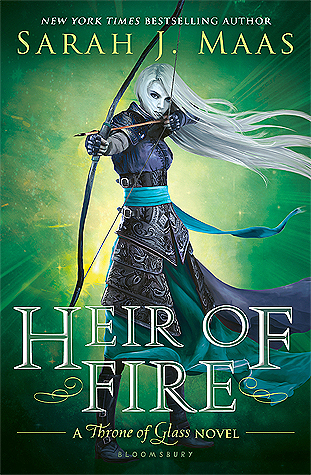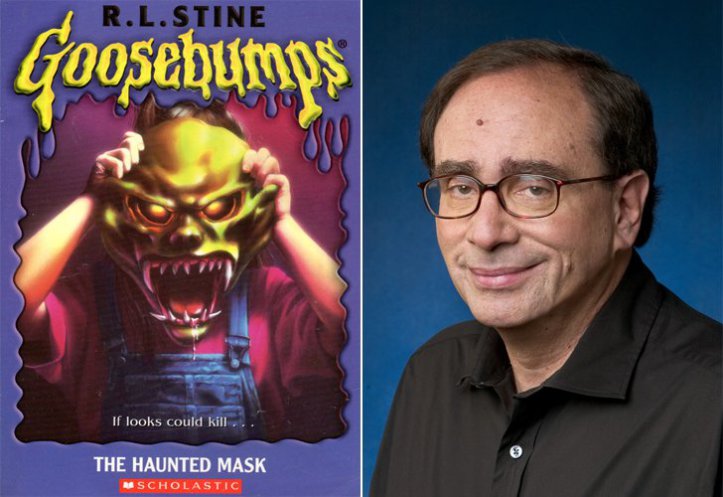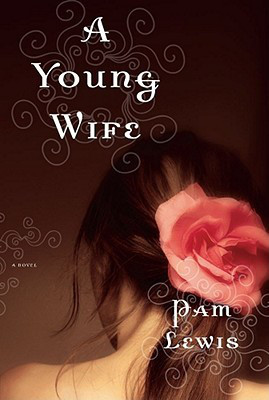When I was younger (as in prior to my fifth birthday) I was more interested in watching video games than playing them. In fact, I was petrified at the idea of losing. I distinctly remember begging for my parents to rent the Pagemaster video game for the Super Nitnendo. They took it home and said I could play it, but I didn’t want to.
“I’ll get squashed by the Frankenstein’s fist!” I explained.
I had great memories watching my parents bicker as they play Super Mario Kart and of my mother breaking the arm chair in excitement the first time she beat Mortal Kombat (yeah, I have cool parents). My first experience playing video games occured when I finally got a television in my room along with the Super Nintendo and all the games my parents had gathered. My first games were Super Mario World, Super Mario All Stars, Pitfall: The Mayan Adventure, and Tetris 2. The first game I decided to play was Tetris 2–a puzzle game that, at the time, seemed like the safest first game. Failure meant seeing your screen fill up with blocks–you didn’t have to watch your character die through fault of your own.
Of course shortly after trying Tetris I would play Mario for hours longer but I’ll write about that another day.
Tetris 2 is the sequel to Tetris, arguably the most successful and famous video game of all time. Its sequel has been seemingly forgotten. Tetris 2 is an odd sequel which modifies the gameplay. The objective is not to clear every block with horizontal lines. Blocks are preset on a level by level basis, and your objective is to clear these preset blocks which are color coded. Stacking two blocks on a preset block of like color eliminates that block, meaning this title plays more similar to Doctor Mario than the first Tetris.
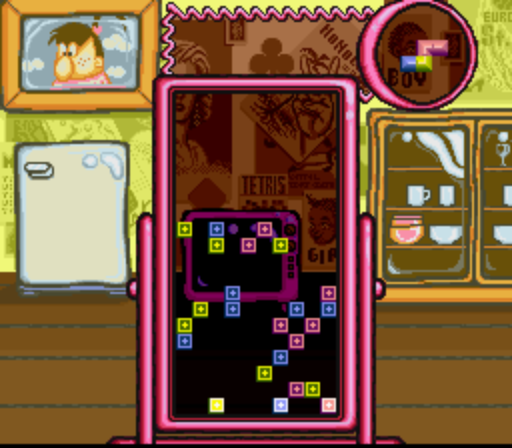
The music and backgrounds are colorful and bouncy. Pictures of cavemen are present in what look like 80s styled living rooms and dining rooms, which sometimes feature windows that give way to views of dinosaurs. This artstyle and origin seems to have nothing to do with Tetris, or its Russian origins, but I like this. The game has a style that is completely unexplained. Why should it be explained? It’s a fucking puzzle game, after all. The style is consistent and weird, which I find interesting and fun to look at. I have vivid memories of staring at the pictures of the clumps of meat and french fries in the backgrounds of the dining room stage and, even as a child, thinking “what the fuck is that and why?”
The gameplay is really fun. I find myself sitting the game down after losing a round after a while, but I always want to come back and see if I can beat where I left off. It begins easy. Like a lot of puzzle games, you can stack trash with the expectation that later on you’ll be able to clear everything out and, since you’re only trying to eliminate objective blocks you needn’t play organized and clean. Yet playing so builds bad habits, for later levels present objective blocks that are placed in such a way and quantity that you really can’t screw around.
My favorite mechanic is one I’ve forgotten about and had to relearn. There are certain objective blocks that are flashing. Eliminate them, and you eliminate all the objective blocks of corresponding color. These blocks seem to be present in every level, and the flashing is quick enough to be entirely missable if you aren’t looking for it. This led to me eliminating several blocks at a time, seemingly at random, until I finally figured it out. Since nothing is really explained, you really are meant to discover this at random….unless you owned the manual of course…but why exactly would I? Huh? PHIL?!? WHY WOULD I KEEP THAT DUSTY RAG AROUND, HUH?
Sit the fuck down Phil.
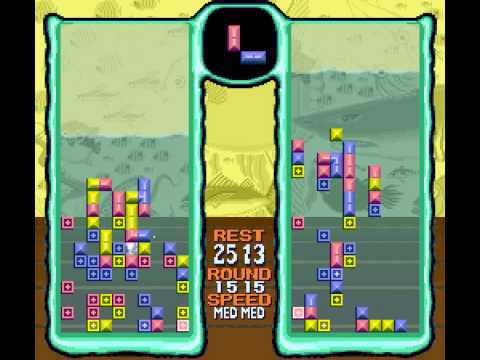
There are enough gameplay modes to keep the player busy beyond the main mode tasking players with 100 stages of ascending difficulty. There’s a puzzle mode, which requires players to eliminate presented blocks with a restricted number of blocks. There’s a versus mode, where players can go one on one with AI opponents or other players. Players eliminate blocks, with combos issuing punishment in the way of extra blocks sent towards their opponent. First player to fill up their screen with blocks loses. It’s a typical versus mode but it’s fun. Definitely no Tetris Attack (and I WILL get to that later).
As a puzzle game I feel that Tetris 2 is a must play for fans and it offers enough content to keep players busy for some time. Just make sure to grab it on Super Nintendo. Although I never played them, I’ve read many complaints about other ports from various people on the internet. As a sequel I find that Tetris 2 is interesting enough, and it alters enough on the original formula, to stand out on its own. It would have been a shame if developers made just another regular Tetris game with different backgrounds and called THAT a sequel. I like it when sequels actually mix things up. Is this better than the original? Absolutely not! But that’s fine because it’s different. It never seems like a game that was meant to top that original game. It’s meant to offer more gameplay, more ways to play, and more ways to think about Tetris, and puzzle games as a genre.
As a first game? I think Tetris 2 was great. It offered me a safe space to experience failure. I learned how to play, and as I continued and became more skilled, I began to realize that I could learn to be successful in other video games through trial and error. I never thought it would become a lifelong obsession, but looking back, and playing Tetris 2 again, I realize that this makes total sense. I love learning, and I love gaining skills. As I sat in my bedroom, when I was five years old playing Tetris 2 on my little CRT, I learned this about myself for the first time.
Stay tuned for more reviews and retrospective looks at more video games from my childhood.
And don’t worry–they will be ranked.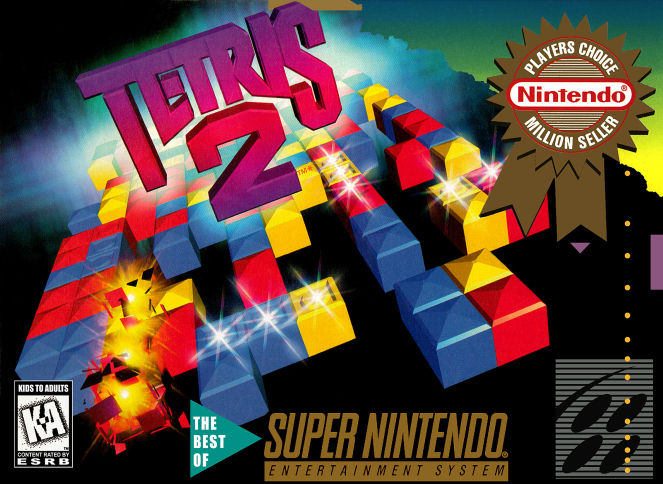
DA. DA DA DA. DA DA DA. DA DA DA. DA DA DA…DA…DA..DA..DA. DA. DA.
10/21/2017
Advertisements Share this:

